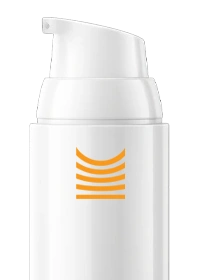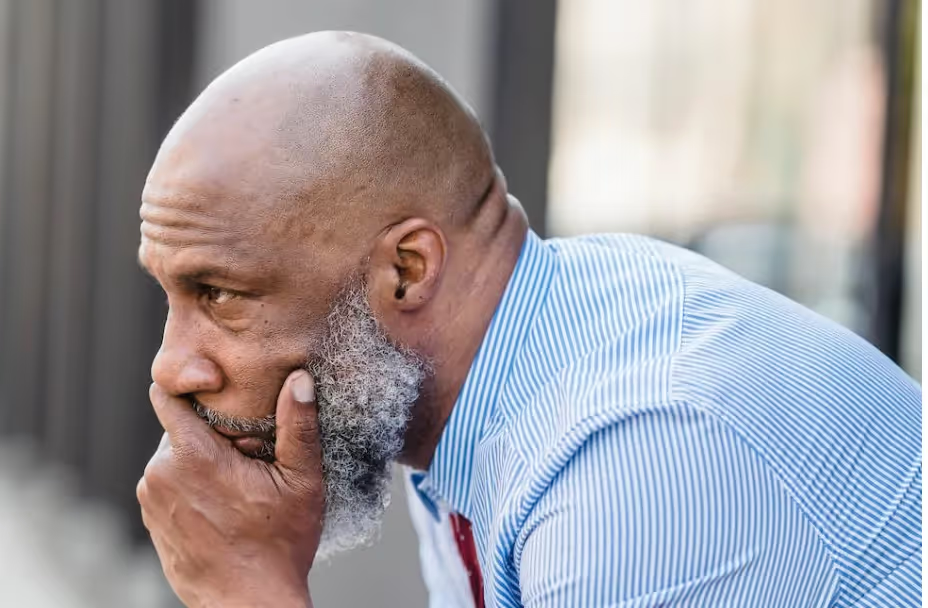
Alopecia Types: Everything You Need To Know About Treatments And Solutions
- Jump to a Section:
At some point, you have to look in the mirror and be honest: you’re losing your hair.
Hair loss is more common than you might think. Over 3 million Canadian men are affected by some form of hair loss. Male pattern baldness affects up to 50% of men, and four out of five men have balding by the time they’re 70. Up to 40% of Canadian women have thinning hair by age 50.
Although this can be a disheartening fact to accept, it doesn’t have to mean you’re completely without options. There are treatment options for alopecia that are proven to be effective — the sooner you act, the higher your chance of regaining volume and thickening your hair.
Before you delve into treatments, learn about the types of alopecia, so you can better understand what treatment options are available and which are worth pursuing.
Androgenetic Alopecia (Male Pattern Baldness)
Androgenetic alopecia is gradual, often affecting men after puberty (National Library of Medicine). It can occur in males and females, where it is known as male pattern baldness and female pattern baldness respectively.
Androgenetic alopecia causes hair thinning and eventual hair loss, starting at the hairline and moving back. This often creates an “M” shape, and the circular area on the back of your head — called the vertex — thins as well.
Treatment Options
Treating androgenetic alopecia requires personalized care. Although it may follow a pattern in terms of hair loss, every individual is unique. Over-the-counter medications like Rogaine could help, but you should still speak with your doctor about whether this is a safe choice for you, especially if you have any existing medical conditions.
Other common treatments for male and female pattern baldness include:
- Minoxidil. An OTC medication that helps prolong the anagen (growth) phase of hair follicles and increases circulation to the scalp.
- Finasteride. A prescription medication the enzyme 5-alpha-reductase, which converts testosterone into dihydrotestosterone (DHT). DHT is an androgen hormone that can shrink hair follicles, so by reducing DHT levels, you may notice improvements in hair thinning and loss.
- Prescription Shampoos and Conditioners. Many medicated shampoos and conditioners that contain finasteride or a combination of finasteride and minoxidil can help you combat hair loss.
- Hair Transplant Surgery. Using the Follicular Unit Transplantation (FUT) or Follicular Unit Extraction (FUE) method, hair follicles are extracted from part of the scalp and placed on the area affected by thinning or balding.
- Low-Level Laser Therapy (LLLT): A non-invasive treatment that uses red light to promote hair growth.
- Platelet-Rich Plasma (PRP): Injections of your own blood plasma that have been spun in a centrifuge; they are injected into the scalp to stimulate hair follicles and encourage growth.
- Scalp Micro pigmentation: Not a hair loss solution, but this cosmetic approach uses a tattooing technique to fill in bald spots and create the illusion of fuller hair on the scalp.
- Nutritional Supplements: Vitamins, nutrients, and supplements like iron, zinc, biotin, omega-3 fatty acids, vitamin E, and saw palmetto may help naturally curb the progression of androgenetic alopecia.
Alopecia Areata (Spot Hair Loss)
Unlike male pattern baldness, which often has a hereditary link, alopecia areata can develop spontaneously. It is an autoimmune condition that causes the body to attack the hair follicles. Because of this, patients can either develop spots around the scalp or eventually lose all of their hair.
Alopecia areata can be treated through topical corticosteroids, minoxidil (Rogaine), and medications that help suppress the immune system response affecting hair growth. Personalized treatment is key to ensure that you are able to target the immunological causes of alopecia areata without suppressing your immune system.
There is no cure for alopecia areata, so seeking medical care as soon as you notice hair thinning and loss is crucial to preserving as much as possible.
Telogen Effluvium
The telogen phase of hair growth is when follicles are dormant and growth is not occurring. Sometimes, this phase extends much longer than it should, leading to hair loss. We lose thousands of hairs every day, but new ones typically grow in to replace them. In telogen effluvium, the disrupted hair cycle results in excessive shedding and hair loss that you cannot replace fast enough to avoid balding.
Treatment options can include over-the-counter medications, stress management, and nutritional supplements or dietary changes. Stress and hormonal imbalances are common underlying causes, so speaking with your doctor for a comprehensive examination could be the key toward finding the most effective treatment.
Traction Alopecia
Men or women who wear their hair in tight ponytails, braids, or buns can start to lose hair at the hairline. This natural recession is due to excessive force (traction) pulling on the follicles, eventually causing them to fall out.
Traction alopecia can easily be stopped by relaxing your hairstyle as soon as you experience pain and notice signs of thinning or a receding hairline. Do not ignore it or attempt to use a spray to make your hairline fuller; this only leads to ongoing damage that could eventually lead to scarring.
Traction alopecia is the easiest to treat because it only resolves changing how you style your hair to prevent damage. However, after the hair loss, some patients may consider exploring hair transplant as an option.
Tinea Capitis
Also known as scalp ringworm, tinea capitis is a fungal infection that infects the scalp and causes the hair to fall out. This condition is contagious and most commonly affects children, but they could easily transmit it to other family members.
Antifungal medication and shampoos are the frontline defences for tinea capitis. Wearing caps and avoiding transmission is also key to preventing further infection or damage.
Signs of tinea capitis include:
- Flaking scalp
- Dry, red skin
- Patchy hair loss
- Low fever
- Swollen lymph nodes
Tinea capitis can be misdiagnosed as a form of dermatitis because of the red, itchy patches it can cause. Seek treatment right away if you suspect the condition, as it can worsen and lead to the formation of an abscess called a kerion. Kerions are painful, pus-filled sores that can eventually lead to scarring alopecia.
Cicatricial Alopecia (Scarring Alopecia)
Scarring alopecia leaves noticeable scars on the scalp after hair is lost. The actual causes can range from infection and illness to ongoing traction alopecia, autoimmune diseases, inflammatory responses, and hair pulling (trichotillomania).
The permanent scarring from this condition can prevent future hair growth, so seeking early treatment is important. Oral, topical, and intralesional (into the scar) therapies are most common and effective.
Cicatricial alopecia can be primary or secondary. Primary scarring alopecia is due to an autoimmune disorder or inflammatory reaction that targets the hair follicles. Secondary scarring alopecia is due to an infection, injury (such as a burn), tumors, or radiation treatment.
Among the many types of scarring alopecia, common symptoms include burning, itching, scabbing, bleeding, and blistering at the site of hair loss. This can be an extremely painful condition that debilitates you mentally as much as it does physically.
While there is no current cure, treatment aims to stop future hair loss. There are some cosmetic treatments that can restore the appearance of bald patches, a hair transplant is not usually a viable option for someone with scarring alopecia.
Postpartum Alopecia
Hormonal fluctuations following childbirth can cause hair loss. It occurs three to six months after giving birth and generally resolves on its own as your hormone levels return to pre-pregnancy levels. Estrogen and progesterone are the two hormones linked to disrupted hair growth cycles during the postpartum period; pregnancy causes a surge of hormones that can fuel hair growth, but as these levels decline, it can trigger hair loss.
The good news is that postpartum hair loss is normal and typically resolves on its own. Using volumizing shampoos and conditioners can help as you wait for your body to return to its baseline after baby.
If you’re considering any nutritional supplements to manage postpartum hair loss, be sure to get clearance from your doctor if you’re breastfeeding.
Hair Shaft Abnormalities
Defects to the hair shaft can also cause alopecia. These abnormalities are generally caused by injury. The most common hair shaft defect is trichorrhexis nodosa
(TN), which is caused by chemical or physical damage. TN weakens the hair and causes it to break off easily.
Loose anagen hair syndrome can also cause hair loss due to faulty follicle structures that cause them to easily fall out.
Seeing a dermatologist or hair loss expert who can make a proper diagnosis is key to finding the right treatment. Though there are no definitive cures, treating the underlying issue — such as a thyroid problem or nutritional deficiency — usually improves hair growth and fullness.
Hypotrichosis
Although rare, this form of alopecia deserves more awareness. People born with hypotrichosis begin to lose their hair during their first or second decade of life. Though the alopecia from hypotrichosis is non-scarring, it can still be devastating on someone’s self-image.
This condition progresses to nearly complete baldness by adulthood. It can also affect the eyelashes, which can be treated with Latisse, a hair-growth serum. Patients with congenital hypotrichosis — which causes wooly hair — may benefit from minoxidil.
However, for those who experience severe alopecia due to this condition, treatment options are cosmetic rather than medical.
You Are Not Alone in Your Hair Loss Journey
Struggling with hair loss is emotionally devastating, but treatment options may be available. While some patients do need to focus more on cosmetic enhancements because their alopecia is not responsive to treatment, these restorations can still boost their self-confidence and help them reclaim their self-image.
At Phoenix, we offer hair loss treatments for men that can help you tackle alopecia from the comfort of home. Contact us today to schedule a tele-health consultation with a licensed physician.
Sources:
Alopecia - Canadian Dermatology Association
Androgenetic Alopecia - National Library of Medicine
Role of Low-Level Light Therapy (LLLT) in Androgenetic Alopecia - PMC
The Best Supplement for Hair Growth, According to a Dietitian








